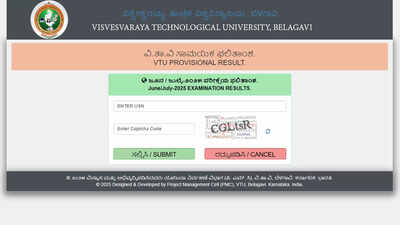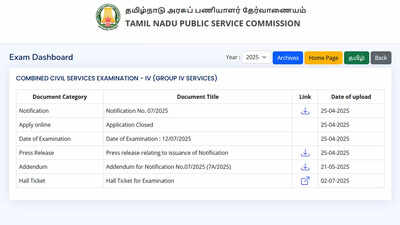Not using AI yet? Your career may already be falling behind, warns Perplexity CEO Aravind Srinivas

What does it really mean to be employable in 2025? For many students and young professionals, that question is no longer answered with just degrees or internships. It’s increasingly about fluency in tools that didn’t exist a year ago and skills that aren’t taught in most classrooms. This is exactly the shift Aravind Srinivas, CEO of Perplexity, highlighted in his recent YouTube interview with Matthew Berman.The discussion quickly turned from innovation to urgency. In a digital economy where generative artificial intelligence (AI) is evolving every few months, Srinivas delivered a message that should echo across classrooms, boardrooms, and job portals: if you’re not learning how to work with AI, you’re falling behind.
The frontier isn’t theoretical anymore
For young professionals entering the workforce, the AI revolution isn’t just an abstract trend. It’s reshaping what employers expect from new hires right now. Those who’ve mastered AI tools are already outpacing their peers in productivity, value, and hiring potential.“People who are really at the frontier of using AI are going to be way more employable than people who are not,” Srinivas stated in the same video. He wasn’t making a philosophical prediction; he was stating a professional reality.From resume screenings to content generation and project management, AI is quietly absorbing the kind of cognitive labour that once demanded human time and training, and it’s not waiting for anyone to catch up.
The paradox of fast tech and slow adoption
While AI is racing ahead, most professionals are still figuring out the basics. The pace at which this technology is evolving means the skills gap is widening, not just because of access, but because of how hard it is to keep up emotionally and mentally.According to Srinivas, the real gap isn’t just technological, it’s psychological and systemic. Humanity, he pointed out, is inherently good at adaptation but not at speed. “We’ve never had a piece of technology evolve this fast,” he remarked, highlighting how the breakneck pace of AI development is outstripping most people’s capacity to keep up.This has a direct bearing on employability. “You can tell people, ‘Hey, go learn AI, be more useful to your team.’ But it takes a toll. People give up,” he said. Educational resources are outdated by the time they gain traction and models get upgraded before manuals are printed. The result is a growing chasm between those who can speak the language of large language models and those still trying to locate the settings tab on ChatGPT.
AI won’t replace you but someone using AI will
This now-familiar phrase was subtly woven into the Perplexity CEO’s statement. The gap between those who can integrate AI into daily workflows and those who can’t is becoming a real factor in promotions, hiring decisions, and team relevance.The threat, Srinivas suggests, isn’t AI itself. It’s the human who knows how to wield it and the solution isn’t fear, it’s fluency. He urges job seekers, students, and working professionals alike to see AI tools not as competition but as companions. “You need to be more useful to your team by being someone who can use AI and be faster and more efficient,” he said. The employability edge, in 2025 and beyond, will be determined not by how hard you work but by how smartly you collaborate with machines.
The emotional cost of staying updated
Learning AI isn’t just intellectually demanding, it’s emotionally exhausting. For many professionals, especially those mid-career or switching industries, the fast-changing AI landscape creates burnout before results.Interestingly, Srinivas doesn’t sugarcoat the emotional fatigue associated with this rapid shift. “Some people are going to lose jobs because this is beyond their limits,” he said frankly. While that might sound bleak, he frames it as a challenge rather than a conclusion.He acknowledges that even content designed to educate is often rendered obsolete within a few product cycles. This makes it harder for average users to stay in the know. “Whatever educational materials you can build for people around the current state-of-the-art models becomes irrelevant like six months from now,” he said. But his message isn’t one of resignation, it’s one of responsibility.
New jobs will need new entrepreneurs
Traditional job roles are getting disrupted, but the upside is clear. There’s room to build. Srinivas points out that the next wave of employment may come not from job boards, but from people creating value in entirely new ways.While some leaders argue that AI-driven productivity could lead to more hiring, Srinivas is cautious. He agrees that teams who are hyper-productive with AI may attract more investment. However, this optimistic view assumes a large enough talent pool trained in the right tools. “The flaw in that argument is that it assumes there’s always going to be a big supply of people who know how to use AI,” he explained.So where do displaced workers go? According to Srinivas, one answer lies in entrepreneurship. “More entrepreneurs need to emerge to create new jobs,” he said. Whether it’s building new platforms or supporting AI-related services, the next wave of employment may be driven more by innovation than application.
Browsers, agents, and a new skill economy
The tasks being automated are often invisible. Things like summarising research, filling out forms, or sorting emails. These might seem small, but together they represent entire job categories and they’re already being replaced.The conversation also touched on how AI is set to take over tasks so routine we rarely reflect on them: browsing, form-filling, email writing. As AI agents begin automating entire workflows, Srinivas pointed out that some labour types will become irrelevant.That shouldn’t cause panic, he stressed, but preparation. “Spend less time doom-scrolling on Instagram. Spend more time using the AI,” he advised. Not because platforms like Perplexity want more users, but because this is the only way to remain valuable in a workforce being reshaped in real time.
The quiet urgency of learning fast
At one point, Srinivas pointed out that, “Most people are still stuck with GPT-4 on the default model,” suggesting that even those who are using AI tools may not be tapping into their full potential. “I hope people try their best. That’s all I can say,” he concluded. For students and job seekers navigating a shifting job market, the message is clear. The goal is not to fear the machine but to keep pace with it. As AI begins to absorb more cognitive tasks, staying employable will depend on how quickly one learns, adapts, and applies. In this new world of work, using AI isn’t optional, it’s fundamental.TOI Education is on WhatsApp now. Follow us here.





